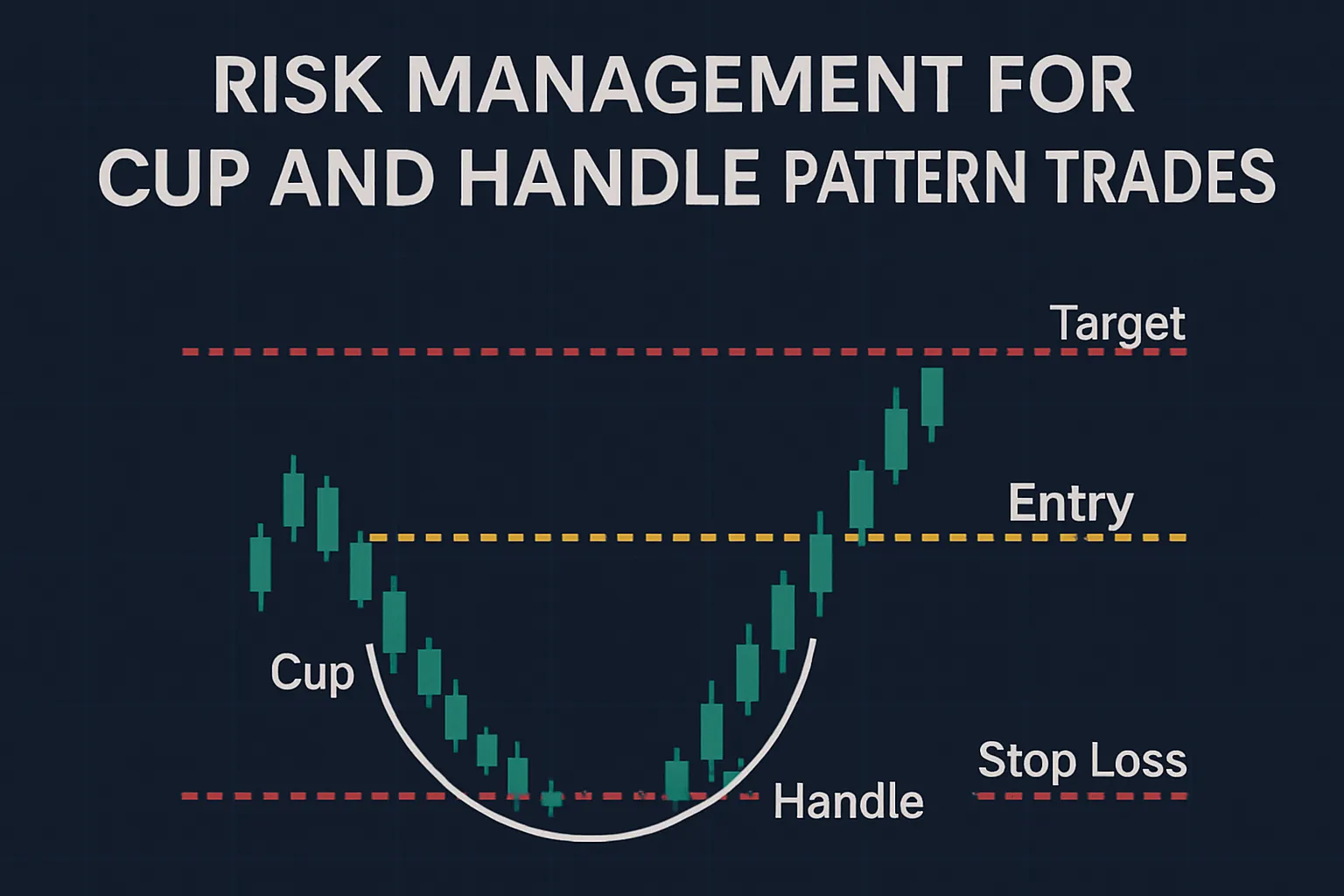
Introduction
Risk management for cup and handle trades is essential to protect your capital while pursuing profits. The cup and handle pattern is a powerful bullish signal, but even the best setups can fail without proper risk controls. Whether trading stocks, forex, or cryptocurrencies, effective risk management ensures you stay in the game. This guide explores key risk management strategies for cup and handle pattern trades, helping you minimize losses and trade with confidence.
What is the Cup and Handle Pattern?
The cup and handle pattern is a bullish continuation chart pattern that forms after a price uptrend. It consists of:
- Cup: A U-shaped consolidation, resembling a bowl, lasting 1–6 months.
- Handle: A short, downward-sloping pullback, lasting 1–4 weeks.
The pattern signals a price breakout when the price closes above the handle’s resistance with high volume. Risk management is critical to navigate false breakouts and market volatility.
Why Risk Management Matters in Cup and Handle Trades
Risk management for cup and handle trades helps you:
- Protect Capital: Limit losses from failed breakouts or reversals.
- Stay Disciplined: Follow a plan to avoid emotional trading decisions.
- Maximize Longevity: Preserve funds to trade future opportunities.
Without risk controls, even a well-formed cup and handle pattern can lead to significant losses in volatile markets.
Key Risk Management Strategies for Cup and Handle Trades
Use these strategies to manage risks effectively when trading the cup and handle pattern:
1. Set a Stop-Loss
- Where: Place a stop-loss below the handle’s lowest point (e.g., if the handle dips to $95, set the stop at $94).
- Why: This protects against false breakouts or reversals, limiting losses if the price drops.
- Tip: Adjust the stop based on volatility—tighter for crypto, wider for stocks.
2. Use Proper Position Sizing
- How: Risk no more than 1–2% of your account per trade. Calculate position size based on the stop-loss distance.
- Example: With a $10,000 account and a $5 stop-loss distance, risk $100 (1%) by buying 20 shares ($100 ÷ $5).
- Why: This prevents large losses from single trades, preserving capital.
3. Maintain a Risk-Reward Ratio
- How: Aim for a risk-reward ratio of at least 2:1. For example, risk $5 to gain $10.
- Why: This ensures potential profits outweigh losses, improving overall profitability.
- Calculation: If the cup’s depth projects a $10 gain and your stop-loss risks $5, the ratio is 2:1.
4. Confirm Breakouts with Volume
- How: Only trade breakouts above the handle’s resistance with a significant volume spike.
- Why: High volume confirms bullish conviction, reducing the risk of false breakouts.
- Use tools like TradingView to monitor volume trends.
5. Monitor Market Conditions
- How: Check the broader market trend using indices like the S&P 500 or indicators like moving averages.
- Why: A bullish market supports the pattern’s success, while bearish conditions increase risk.
- Avoid trading during high volatility or major news events that could disrupt the pattern.
Common Risk Management Mistakes
- No Stop-Loss: Trading without a stop-loss exposes you to unlimited losses.
- Overleveraging: Large position sizes amplify losses, especially in volatile markets like crypto.
- Ignoring Volume: Low-volume breakouts often fail, increasing risk.
- Emotional Trading: Chasing trades or holding losses too long undermines risk management.
Tools and Resources
Enhance your risk management with these resources:
- TradingView: Track volume and set stop-loss alerts. Visit TradingView.
- Investopedia: Learn risk management techniques for trading. Read on Investopedia.
- BabyPips: Explore risk control strategies for forex trading. Explore BabyPips.
Tips for Traders
- Plan Every Trade: Define stop-loss, position size, and risk-reward ratio before entering.
- Practice on Demo Accounts: Test risk strategies without real money.
- Use Indicators: Combine RSI or MACD to confirm breakout strength and reduce risk.
- Review Trades: Analyze past trades to improve risk management skills.
FAQ Section
Q: Why is risk management important for cup and handle trades?
A: It protects capital from false breakouts and ensures long-term trading success.
Q: Where should I set a stop-loss for a cup and handle trade?
A: Place it below the handle’s lowest point to limit losses from reversals.
Q: How much should I risk per cup and handle trade?
A: Risk 1–2% of your account per trade to preserve capital.
Q: Does volume affect risk management in cup and handle trades?
A: Yes, high-volume breakouts reduce the risk of false signals, improving trade reliability.
Q: Can risk management strategies apply to crypto cup and handle trades?
A: Yes, but use tighter stops and smaller positions due to crypto’s volatility.
Conclusion
Risk management for cup and handle trades is the backbone of successful trading. By setting stop-losses, sizing positions wisely, maintaining a favorable risk-reward ratio, confirming breakouts with volume, and monitoring market conditions, you can protect your capital and thrive in stocks, forex, and crypto. Use tools like SAPRO to refine your approach. For more trading insights, visit https://cupandhandlepattern.com/.





Leave a Reply